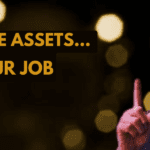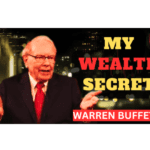Introduction
Are you tired of the daily grind, punching the clock, and feeling like you’re running on a financial treadmill? The desire for financial freedom is a dream that many of us share, and one man who has made it his mission to help people achieve this dream is the legendary financial educator, Robert Kiyosaki.
In his groundbreaking book, “Rich Dad Poor Dad,” Kiyosaki introduced us to the concept of financial independence through smart investing and acquiring assets. Kiyosaki’s teachings have changed countless lives and continue to inspire people worldwide. In this article, we will delve deep into Kiyosaki’s wisdom and explore the seven assets he recommends for achieving financial freedom. We’ll also sprinkle in valuable insights to help you on your journey to financial independence.
Chapter 1: Understanding Kiyosaki’s Philosophy
Before we dive into the seven assets, let’s take a moment to understand Robert Kiyosaki’s financial philosophy. At the heart of Kiyosaki’s teachings is the idea that true wealth comes from owning and investing in assets, not working for a paycheck. He famously divides people into four main categories based on their approach to money:
- Employees: These individuals work for others, trading their time for a salary. Kiyosaki believes this is the worst position to be in because it offers the least control and security.
- Self-Employed: Self-employed individuals work for themselves, such as doctors or lawyers. While they have more control, they are still trading their time for money and often lack the leverage to build significant wealth.
- Business Owners: Business owners have created systems and assets that generate income even when they’re not actively working. This is a step in the right direction, but many small business owners still find themselves working long hours.
- Investors: True financial freedom comes when you become an investor. Investors let their money work for them, and they accumulate assets that appreciate and generate passive income. This is the ultimate goal according to Kiyosaki.
Chapter 2: The 7 Assets for Financial Freedom
Now that we’ve grasped the fundamentals of Kiyosaki’s philosophy let’s delve into the seven assets he recommends for achieving financial freedom.
1. Real Estate: Building Wealth with Properties
One of Kiyosaki’s favorite assets is real estate. Owning real estate allows you to leverage other people’s money (through mortgages) to build wealth. Here’s how it works:
- You acquire a property, either to rent out or for capital appreciation.
- Your tenants pay rent, covering the mortgage and providing you with passive income.
- Over time, the property’s value appreciates, increasing your net worth.
Kiyosaki advises that, to be successful in real estate, you should educate yourself about the market, understand property management, and be aware of market cycles.
2. Stocks: Becoming a Shareholder
Investing in stocks is another crucial asset recommended by Kiyosaki. While it can be intimidating for beginners, it offers the potential for substantial returns. Here are some key concepts to consider:
- Diversify your stock portfolio to reduce risk.
- Invest for the long term, taking advantage of compound interest.
- Consider dividend-paying stocks to enjoy passive income.
Kiyosaki stresses that stock market investing requires education and patience. He also recommends learning from experts and constantly upgrading your financial knowledge.
3. Bonds: Stable Income through Fixed Investments
Bonds are a lower-risk asset that Kiyosaki suggests for a balanced portfolio. Unlike stocks, bonds provide a predictable income stream through interest payments. Here’s what you need to know:
- Bonds are considered safer investments because they offer fixed income and the return of the principal.
- Kiyosaki advises diversifying your bond portfolio by investing in different types of bonds.
- Bonds can provide stability and a steady income, making them an excellent choice for risk-averse investors.
4. Business Ownership: The Path to Passive Income
Kiyosaki often emphasizes the importance of entrepreneurship and owning businesses as a means to generate passive income. While this might require hard work upfront, it can be a powerful asset in the long run.
- Start or invest in a business with the potential for scalability.
- Delegate responsibilities and build a team to manage the day-to-day operations.
- Once your business is self-sustaining, you’ll have more time and resources for other investments.
5. Commodities: Hedging against Inflation
Kiyosaki is a proponent of owning commodities like gold and silver as a way to protect your wealth from inflation. Here’s why:
- Commodities tend to retain their value during economic downturns.
- They act as a hedge against currency devaluation and rising prices.
- Diversify your portfolio with a portion allocated to precious metals or other commodities.
6. Intellectual Property: Creating Streams of Royalty Income
Kiyosaki’s assets go beyond the physical. He encourages people to explore the world of intellectual property and licensing. This could include books, patents, or music royalties.
- Create intellectual property that can generate royalties over time.
- Licensing your creations can provide ongoing passive income.
- Intellectual property can be a valuable addition to your diversified asset portfolio.
7. Cryptocurrencies: The New Frontier
In recent years, Kiyosaki has shown interest in cryptocurrencies, particularly Bitcoin. He views them as a hedge against a weakening traditional financial system and a potential store of value. Here’s what you need to know:
- Cryptocurrencies are highly speculative and volatile, so invest only what you can afford to lose.
- Consider diversifying within the cryptocurrency space by holding a mix of assets.
- Stay informed about the latest developments and regulatory changes in the cryptocurrency market.
Chapter 3: The Power of Passive Income
At the heart of Kiyosaki’s philosophy is the concept of passive income. These assets all share one common trait: the potential to generate income without your active involvement. Whether it’s rent from real estate, dividends from stocks, interest from bonds, royalties from intellectual property, or profit from a well-managed business, passive income is the key to financial freedom.
Passive income allows you to break free from the constraints of traditional employment. It’s the money that keeps coming in, even when you’re not actively working. Imagine waking up in the morning and knowing that money has flowed into your bank account while you slept. It’s a liberating feeling, and it’s achievable with the right combination of assets and smart financial decisions.
Chapter 4: Building Your Asset Portfolio
Now that we’ve explored the seven assets recommended by Robert Kiyosaki, it’s time to take action. Here’s a step-by-step guide to building your asset portfolio:
Step 1: Education
Before diving into any investment, invest in your financial education. Read books, attend seminars, and follow financial news. Understanding the nuances of each asset class is critical to making informed decisions.
Step 2: Set Clear Goals
Define your financial goals and your vision of financial freedom. Having clear objectives will guide your investment decisions and keep you motivated.
Step 3: Create a Budget
Determine how much you can invest each month without affecting your daily expenses. Discipline and consistency are keys to success.
Step 4: Diversify
Don’t put all your eggs in one
basket. Diversification minimizes risk and maximizes potential returns. Spread your investments across various asset classes.
Step 5: Start Small
If you’re new to investing, start with a manageable amount and gradually increase your investments as you gain confidence and experience.
Step 6: Seek Expert Advice
Consider working with financial advisors or experts in each asset class to make informed decisions.
Chapter 5: Staying Committed to Your Financial Freedom Journey
It’s easy to get excited about the prospect of financial freedom, but it’s also easy to get discouraged when challenges arise. Building your asset portfolio requires dedication and perseverance. Here are some tips to stay committed to your financial freedom journey:
- Stay Informed: Continuously educate yourself about financial matters and stay updated on market trends.
- Stay Disciplined: Stick to your budget and investment plan, avoiding impulsive decisions.
- Track Your Progress: Regularly review your investments and reassess your goals.
- Embrace Failure: Don’t be discouraged by setbacks. Learn from your mistakes and adapt your strategy.
- Network: Surround yourself with like-minded individuals who share your financial goals.
- Visualize Success: Imagine the life of financial freedom you desire. It can be a powerful motivator.
Conclusion
Robert Kiyosaki’s philosophy and the seven assets he recommends can be your roadmap to financial freedom. Whether you’re just starting your journey or looking to refine your existing strategy, the principles he shares in “Rich Dad Poor Dad” and subsequent books are timeless and proven.
Remember, the road to financial freedom is not a sprint; it’s a marathon. It requires patience, commitment, and a willingness to learn and adapt. But the potential rewards, the freedom to live life on your terms, are well worth the effort.
So, are you ready to take the first step toward a life where you never have to work again for the sake of survival? Start by investing in yourself, in your financial education, and then in the assets that will set you on the path to true financial independence.
What are your thoughts on Kiyosaki’s philosophy and the assets he recommends? Have you already started your journey toward financial freedom? Share your experiences and questions in the comments below, and let’s support each other on the path to a life where work becomes a choice, not a necessity. Your financial freedom awaits!









